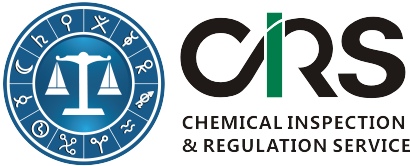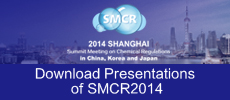Analysis of Draft of GB 9685 National Standard for the Uses of Additives in Food Contact Materials and Articles in China
original article from CIRS
National Health and Family Planning Commission of the People’s Republic in China (NHFPC) issued GB 9685 Draft of National Standard for the Uses of Additives in Food Contact Materials and Articles on 20 Jan, 2015. From the GB 9685 Draft, key revisions were found in both content and format of the draft version. The Draft has been released to the public for consultation. It has no legal effect for the moment, though, it provides the guidance on the usage of food contact material additives for food contact materials and articles manufacturers. Followings are the detailed highlights of GB 9685 Draft.
First of all, in order to further clarify the additive application scope, the name of GB 9685 has been changed into “the Uses of Additives in Food Contact Materials and Articles”, which is more internationally accepted. The definition of “articles” include food packaging, food container, food tableware; the products such as coating, ink and adhesive which will come into contact with foods directly or indirectly are also included; and the articles like machinery, piping, conveyor belts, containers and utensils which are used in food production, processing, transportation, storage and other food related processes also fall into the category. Detergents, disinfectants or public water facilities are exclusions. Attention should be paid to the word ‘indirectly’, which means that in the future, even though the materials are not actually contacting with the foods directly, as long as there is still possibility that the material will contact with the food, the use of the additives shall also meet the requirements in GB 9685.
In addition, significant changes are made to the content and format of Annex A “Approved Additives and Using Requirements in Food Contact Materials and Articles” in the Draft. According to the application scope of additives, Annex A has been separated into 7 parts from Table A.1 to Table A.7 including plastic, coating, rubber, ink, adhesive, paper and other relevant products. A code system has been established for each substance to improve the function of the search engine.
A health risk assessment will be made based on a series of relevant substances instead of a single substance. In order to improve the risk control and administrative processes, the concept of Specific Migration Limit (SML) in old GB9685-2008 (SML for single substance) has been replaced with a new concept of Total Specific Migration Limit (SML/(T)). In addition, the concept of SML/(T) has also been adopted by metallic elements (Barium, Cobalt, Copper, Ferrum, Lithium, Manganese, Zinc).
The biggest change in the Annex is that although some additives will be forbidden to be used in food contact materials and articles, a significant number of substances are going to be allowed in the draft. Below is a table showing the detailed changes in the GB 9685 draft.
Newly Added Additives in GB 9685 Draft |
348 additives from the previous official Notices published by MOH and NHFPC were added into the draft. |
17 newly approved additives from the previous official Notices published by MOH and NHFPC were added into the draft. |
The expanded application scope and dosage of 204 additives from the previous official Notices published by MOH and NHFPC were added into the draft. |
The food additives in the Table A.2 of General Standard for Use of Food Additives (GB 2760) are allowed to be used as Food Contact Material Additives (FCA). |
Sodium salt, potassium salt and calcium salt of acids, alcohols and phenols in Annex A are allowed to be used as FCA. |
Substances with crystal water in Annex A are allowed to be used as FCA. |
Resin (molecular weight > 1000 Dalton) can be used as FCA if it is approved to be used in food contact material and products (except for macromolecular substances generated via microbial fermentation). |
Restricted or Forbidden Additives in GB 9685 Draft |
1,2-Benzenedicarboxylic acid, dimethyl ester, CAS 131-11-3 will be forbidden as FCA. |
1,2-Benzenedicarboxylic acid, bis(2-methylpropyl) ester, CAS 131-17-9 will be forbidden as FCA. |
1,2-Benzenedicarboxylic acid, diisooctylester, CAS 27554-26-3 will be forbidden as FCA. |
1,2-Benzenedicarboxylic acid, di-C9-11-branched alkyl esters, C10-rich, CAS 68515-49-1 will be forbidden as FCA. |
The application scope and dosage of the other 5 PAEs will be narrowed down as FCA. |
N-Vinyl-2-pyrrolidone, NVP, CAS 88-12-0 will be forbidden to be used in ink as FCA. |
Borax, CAS 1303-96-4 which had requirements in glass, enamel, ceramic and metal in GB 9685-2008 will be removed from GB 9685 draft. |
Kaolin, calcined, CAS 92704-41-1/66402-68-4 which was supervised in ceramic in GB 9685-2008 will be removed from GB 9685 draft. |
2-Propanol, CAS 67-63-0 which was supervised in metal in GB 9685-2008 will be removed from GB 9685 draft. |
Carbonic acid monosodium salt, CAS 144-55-8 which was supervised in glass in GB 9685-2008 will be removed from GB 9685 draft. |
Carbonic acid disodium salt, CAS 497-19-8 which was supervised in glass in GB 9685-2008 will be removed from GB 9685 draft. |
Acetic acid, CAS 64-19-7 which was supervised in glass in GB 9685-2008 will be removed from GB 9685 draft. |
6 additives will be restricted or forbidden as FCA in infant and young child food contact materials and articles. |
Tremendous changes have been made to GB 9685 draft. The usage requirements of the FCAs are getting stricter, though, the number of substances approved to be used in FCA has been increased. Compared to GB 9685-2008, the new GB 9685 draft is more scientifically reasonable and more internationally accepted, which is getting closer to the FCM regulations in developed countries, such as Japan and USA.
It is recommended that enterprises take actions to check the updated contents of the new draft and comply with the new regulations as early as possible to ensure the successful business in China.
Download
Draft of GB 9685 Uses of Additives in Food Contact Materials and Articles (CN version free download)
If you are interested in getting the English version of the Draft of GB 9685, please feel free to contact us.
Relevant Links:
Food Regulatory Compliance Services
We welcome you to visit our new website in food area
http://www.cirs-group.com/food/
Contact Us
- CIRS China
11F Building 1, Dongguan Hi-Tech Park, 288 Qiuyi Road, Binjiang District, Hangzhou 310052, China
Tel: +86-571 8720 6574 | Fax: +86-571 8720 6533
Email: service@cirs-reach.com

